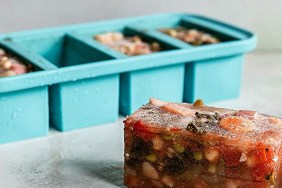How to stop breastfeeding? “In an ideal world, the mother gradually stops offering the breast, and the baby stops asking as often, and eventually breastfeeding is just over,” says Mairi Breen Rothman, CNM, MSN, a certified midwife in Takoma Park, Maryland. “This is called baby-led weaning, and is the easiest way to wean, for both mom and baby.” However, as many moms can tell you, sometimes things don’t work out quite so neatly, and you need to figure out how to stop breastfeeding for whatever reason — ASAP.
Once you decide stopping breastfeeding is in order, don’t go cold-turkey. (In fact, experts recommend holding onto the bedtime feeding for as long as you can to soothe your baby to sleep, especially if that’s how you’ve been getting her down for the night.) Instead, follow this step-by-step guide on how to stop breastfeeding, suggested by experts. This plan for stopping breastfeeding is safe (and will be more comfortable) for you and your little.
Step 1: Introduce breast milk alternatives.
If your baby is less than 6-months-old, and you’re able to wean gradually, start by substituting a bottle of iron-fortified infant formula for one feeding a day, for a few days. Then, increase to two formula feedings for a few days, and so on, until the baby is exclusively on formula. For babies 6 months and older, the incorporation of solid foods into their diet should give them the nutrition they need (see Step #5), along with cow’s milk. Babies that are already a year old should transition straight to sippy cups, instead of bottles, as they’re far better for your child’s dental health, says Lori Feldman-Winter, MD MPH, professor of pediatrics at Children’s Regional Hospital at Cooper Medical School of Rohn University, in Southern New Jersey, and the policy chairperson on breastfeeding for the American Academy of Pediatrics.
Step 2: Stop pumping or expressing breast milk.
If you’re truly done with breastfeeding, then you should stop pumping or expressing milk, as you’re introducing formula to the baby. “If you wean gradually, you will gradually stop producing milk, and eventually it will stop, without any discomfort, most likely,” explains Rothman. “Lactation is simply a supply-and-demand process, so if you stop demanding, the supply will disappear.”
Step 3: Soothe engorged breasts.
Should the weaning happen more suddenly — say, because the baby has gone on a nursing strike — you’re likely to get very engorged and have hot, heavy, hard painful breasts for a day or two, says Rothman. As painful as it is, don’t do anything that will stimulate milk production, like pumping or hand expressing, and no hot showers or hot compresses, either. It will only prolong the pain! Instead, Rothman recommends wrapping your breasts with frozen raw cabbage leaves, or paper-thin slices of raw potato which can relieve the pain and inflammation. You may also find that a supportive bra, cold compresses, and ibuprofen can alleviate some of the discomfort. After a couple of days, the pain should subside significantly.
Step 4: Replace the cuddle opportunities.
Often, the biggest challenge for babies while stopping breastfeeding is the loss of that comfort and closeness. “For babies who’ve been breastfed for so long, it’s the security, nurturing, and positive reinforcement they get from breastfeeding that’s just as important as the nutrients they’re getting,” says Feldman-Winter. You want to ensure that your child is still getting that closeness even with bottle-feeding, so provide lots of cuddling and kissing during their new feedings.
Step 5: Find distractions.
If your child has become accustomed to snuggling up and feeding several times a day, it’ll be a little harder to break the old, familiar habits. “If possible, try to offer the child alternatives when he asks to nurse, like something to eat or drink, reading a book, or going outside to play,” says Breeman. “Eventually, he will learn to enjoy other ways to eat and drink, as well as ways to snuggle and connect with you, and the nursing can stop more gently.”
Step 6: Start incorporating more solids.
For children over 6 months old, you can increase the solid foods you’re offering, to replace the nutrients they’ve lost from the breastmilk. “At around this age, the baby should begin to eat some complimentary foods that will provide iron and zinc and protein,” says Felman-Winter. “Brown meats are a good source of those nutrients as long as they’re ground and mushy, but you want to offer the baby a variety of foods, and continue to offer them even if they, at first, reject them.” The good news is that children who have been breastfed have more of a willingness to try different flavors, so this foray into new and exciting solid foods will be fun for them.
Step 7: Address any weaning woes.
If you’ve been breastfeeding your baby for awhile, you might experience an emotional jolt when it ends. “There is sort of a biological shift in your hormones, a change in the balance, that can create some sadness or anxiety after you’ve weaned,” says Stephanie Ho, MD, a New York City-based reproductive psychiatrist. “There’s also the psychological reality of giving up that feeling of closeness, and the guilt that can often come when you’ve made the decision to wean.” Either way, it’s fairly normal and should pass after about a week. If you’re still feeling the blues a couple of weeks later, check in with your doctor or a mental health professional.
More Advice for Breastfeeding Moms:
- How to Breastfeed in Public
- 21 Things Only Moms Who Breastfeed Know
- The Best Breast Pumps, According to Lactation Consultants
Photo: Getty




